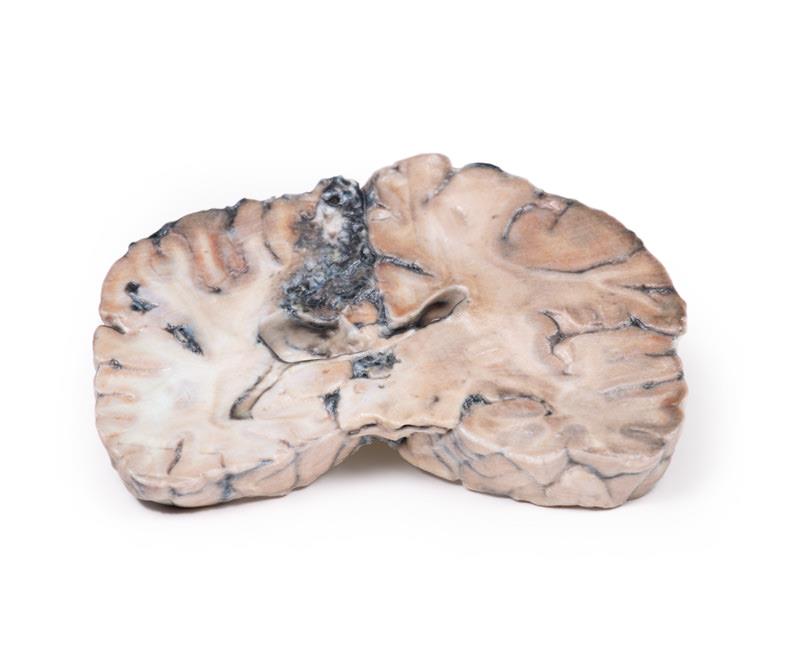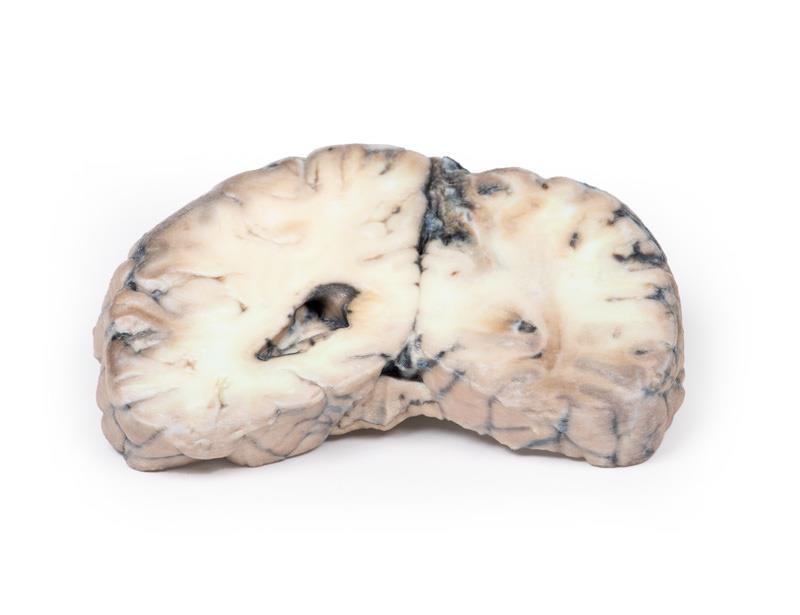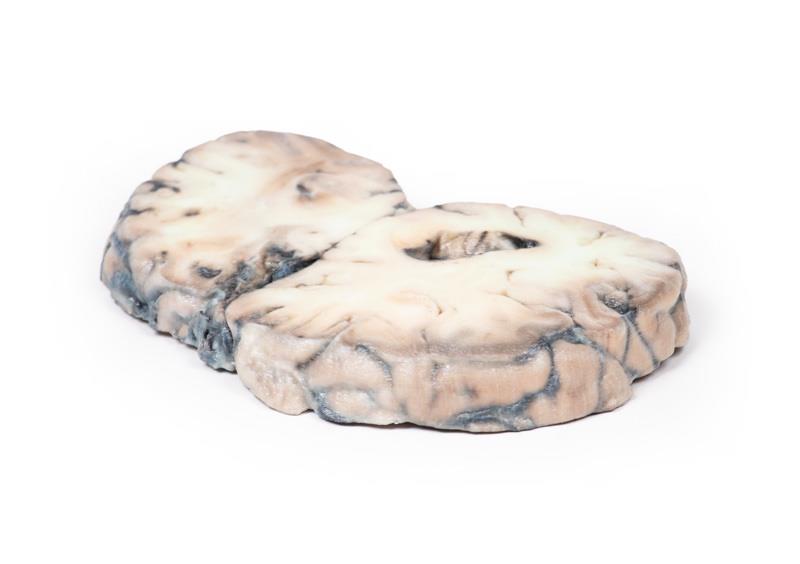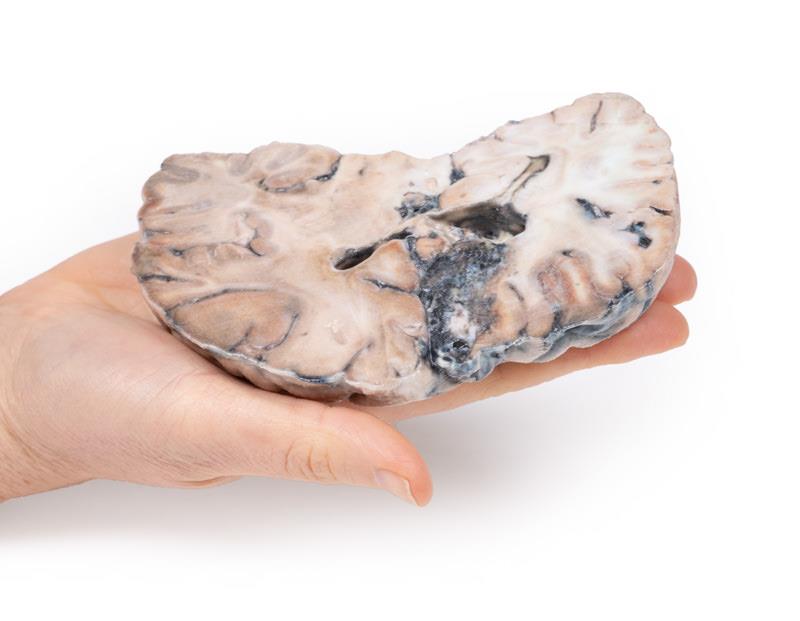Description
Clinical History
This patient died at the age of 58 years from post-operative complications following transurethral resection of the prostate. At the ages of 28 and 35, he had suffered two episodes of transient neurological deficit. However, at 50 years, he developed permanent hemiparesis of the left leg chiefly affecting his ankle.
Pathology
The specimen is a coronal slice of the brain that passes through the parietal lobes. Cortex and white matter on the medial aspect of the right cerebral hemisphere have been replaced by a mass of abnormal tissue 4 cm in greatest diameter. This lesion extends from the superior surface down to the roof of the lateral ventricle. A closer inspection reveals the tissue to be a network of tortuous vascular channels and intervening tissue.
Histological examination of this arterio-venous malformation showed glial tissue surrounding dilated vessels. All vessels had a typical endothelial lining, some showed thick muscular walls and others thin walls, thus identifying themselves as arteries and veins, respectively.
Further Information
The most frequently observed problems, related to cerebral arteriovenous malformations (AVM), are headaches, seizures, cranial nerve deficits and back pain, and nausea may follow the occurrence of coagulated blood escaping into the CSF in the vertebral column. Some patients with AVM have no symptoms at all. Progressive weakness and numbness and vision changes as well as debilitating, excruciating pain may also occur depending on the location of the AVMs. In serious cases, the vessels may rupture and cause intracranial haemorrhage. In patients with AVM haemorrhage, symptoms caused by bleeding include loss of consciousness, sudden and severe headache, nausea, vomiting, incontinence, and blurred vision, amongst others. Local damage on the bleed site are also possible and can cause seizure, one-sided weakness (hemiparesis, as in this patient), a loss of touch sensation on one side of the body, and deficits in language processing (aphasia). Ruptured AVMs are responsible for considerable mortality and morbidity.



